We investigate the toilet habits of the animal kingdom this week as well as taking a pot shot at which way a dirty golf ball swings in mid air, answering whether warmer waters attract more sharks and if there's a genetic basis to intelligence. We also get an update on what geologists studying the recent earthquake in Haiti are learning from information beamed back from space, and how a new tech-driven initiative called Crisis Camps is helping to streamline aid efforts after a catastrophe. Plus, laser-sensitive nanoparticles that can help to identify tumours, the genome of a 4000 year old man and whether elephants can run...
In this episode

01:44 - Nanoparticles and a sonic signature pick up blood-borne cancers
Nanoparticles and a sonic signature pick up blood-borne cancers
Scientists have developed a new way to detect cancer cells in blood using laser-sensitive magnetic nanoparticles.
Cancer occurs when cells in the body mutate, causing them to lose their normal growth inhibitions and divide rapidly.
 This can cause a localised accumulation of cells called a tumour; in the wrong place this can be fatal in itself, but more normally the really dangerous aspect of cancer is when it sheds cells that take up residence in other parts of the body in a process called metastasis.
This can cause a localised accumulation of cells called a tumour; in the wrong place this can be fatal in itself, but more normally the really dangerous aspect of cancer is when it sheds cells that take up residence in other parts of the body in a process called metastasis.
It would be very useful to detect these cells as soon as they get into the bloodstream, but there may be only a few thousand of them in the blood at any one time, so the amount of blood you would have to screen would be impracticle.
But now Ekaterina Galanzha and collegues have come up with an interesting solution to this problem. First they inject tiny magnetic particles which are chemically attached to a molecule that docks with a receptor carried by many types of cancer cell. This means that any cancer cells present ultimately become covered with magnetic particles.
Then, by placing a large magnet adjacent to a blood vessel, the magnetically-decorated cancer cells accumulate along the side of the vessel; the longer the magnet is there there more cells accumulate.
To detect and quantify them, pulses of laser light are fired into the blood vessel. This is absorbed preferntially by the particles, causing them to heat up, which creates a detectable sound. The louder it is, the more cancer cells there must be present.
Any nanoparticles not attached to cancer cells tend to get washed away by the blood flow, but to increase the specificity of the assay the researchers also added a second set of nanoparticles, these ones consisting of miniature gold rod structures, which stick to a different receptor on the cancer cells. They also respond to a different wavelength of laser light, meaning that if both particles are present the you can be reasonably sure that a genuine cancer cell has been detected.
The technique has successfully detected cancer cells in experimental mice, and the results seem to tally with the cell counts seen in the animals, suggesting that the same approach could have practical and diagnostic uses in humans.
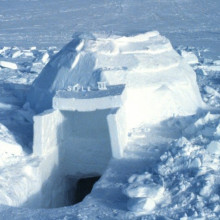
04:38 - Genome sequence of 4000 year old human
Genome sequence of 4000 year old human
Scientists have  decoded the genome sequence of an ancient human who lived 4000 years ago using hair samples recovered from the permafrost at an archaeological site in Greenland.
decoded the genome sequence of an ancient human who lived 4000 years ago using hair samples recovered from the permafrost at an archaeological site in Greenland.
The DNA code reveals that the individual was male, had brown eyes, wiry black hair, dark skin, short stature, dry earwax and a tendency to baldness!
The work, published in Nature and carried out by University of Copenhagen researcher Eske Willerslev and his colleagues, reveals some intriguing details about how humans got to be in that part of the world and when.
The brought the man's characteristics to life by analysing the ancient DNA for sequences called SNPs (single nucleotide polymorphisms), which are like genetic signposts pointing to the presence of certain appearance traits.
By comparing the SNP pattern from the ancient man with SNPs carried by present-day populations known to have certain characteristics, it was possible to discover what this person would have looked like and where on Earth he and his tribe arose.
Most existing theories suggested that the Saqqaq people, to whom this man belonged, were migrants from neighbouring native American or Inuit populations. Instead, what the analysis shows is that this ancient eskimo is related to neither; he was actually from somewhere in Siberia.
This suggests that there must have been a significant, and much more recent, migration from Siberia across the Bering Strait, over North America and into Greenland about 5000 years ago.
Understanding how humans evolved and populated the globe by which routes and over what times is an open book; this new study shows that when the power of modern genetics is brought to bear upon the problem great leaps forward in our understanding are possible.

07:27 - Do elephants run, trot or just walk rapidly?
Do elephants run, trot or just walk rapidly?
This sounds like an obvious question, but what do we actually mean by running? One definition is that all of an animal's legs leave the ground at once, which is obvious when humans are running, but the same happens when a dog or horse runs. In this case an elephant definitely doesn't run as it always has a leg on the ground, but when the elephant is moving fast it does look more dynamic than a walk so what is going on?
 A slightly more sophisticated definition is that when you are walking your total amount of kinetic and gravitational potential energy is about constant, so if your centre of mass moves up you slow down and vice versa, but if you are running energy is stored in springy tendons in your legs and your total kinetic and potential energy goes up and down.
A slightly more sophisticated definition is that when you are walking your total amount of kinetic and gravitational potential energy is about constant, so if your centre of mass moves up you slow down and vice versa, but if you are running energy is stored in springy tendons in your legs and your total kinetic and potential energy goes up and down.
Norman Heglund from belgium has tried to investigate this in elepants, by going to an elephant sanctuary in Thailand and then building a large elephant proof track which measures the forces the elephant is applying to the ground - which involves some quite serious engineering.
They have found that elephants sort of run. Their front legs bounce in a running manner, but their back legs walk in a smooth manner. It is like elephants are almost running but are too heavy to do it properly. Not that this would make a lot of difference if you are facing a charging 4 tonne elephant of course.

10:26 - Solar Dynamics Observatory
Solar Dynamics Observatory
The sun is the source of over 99.9% of the energy arriving at the surface of the Earth and it is a very active place with giant solar flares and complex weather. This weather can hurl giant lumps of plasma called coronal mass ejections out into the solar system, knocking out power systems and satellites over 80 million miles away on Earth. Plus, we are just starting to understand the ways solar weather can affect the weather on earth.
 On Thursday, NASA launced a new satellite called the Solar Dynamics Observatory designed to view the sun continuously at higher resolution, and at a higher rate than ever before, take a spectrum of the sun more than every 10 seconds and measure the magnetic field on the surface of the sun continuously.
On Thursday, NASA launced a new satellite called the Solar Dynamics Observatory designed to view the sun continuously at higher resolution, and at a higher rate than ever before, take a spectrum of the sun more than every 10 seconds and measure the magnetic field on the surface of the sun continuously.
This is going to produce a huge amount of data - about 1.5 terrabytes every day which needs a network connection of over 150Mbit/second. This means it has to be in a geostationary orbit over its basestation in America so it can keep transmitting all the time.
Hopefully it will let us get a much better understanding of the sun and its affects on the Earth.
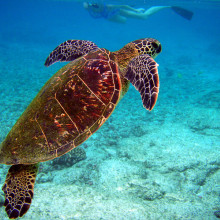
12:26 - Secrets of a sea turtle's first steps
Secrets of a sea turtle's first steps
If you've ever tried running along a beach on soft, dry sand, you'll how much hard work  it can be; the grains of sand shifting beneath your feet slow you down and make it more likely you will slip and fall over. Sea turtles know only too well the perils of sandy beaches. After they hatch, baby turtles emerge from their nests and run the gamut of the beach, down to the waves. Even though they only spend a few brief moments on land, baby turtles can move with remarkable speed across sand even if it is loose and slippery. The question is: how do they do it?It turns out that newborn turtles use their flippers to produce small blocks of compact sand, which act like a solid allowing the turtles to propel themselves rapidly across the beach surface. These findings are published in the journal Biology Letters by Daniel Goldman and colleagues from the Georgia Institute of Technology in the US.Last year, Goldman and his team built a creature called SandBot, a simple robotic creature that helped them understand how real animals cope with walking across soft sand. The researchers found they had to carefully adjust the movements and timing of Sandbot's six legs in order to get it to walk across rather than swim inefficiently through the sand.Turning their attention to turtles, the team went down to the beach at Jekyll Island, armed with a mobile laboratory to work with the Georgia Sea Turtle centre. Together they took high-speed film of hatchling leatherback turtles crawling along a trackway covered either with loosely packed sand or sand paper to mimic hard ground.The researchers were very careful not to disturb the turtles too much, only taking 5 animals from each nest, and only trying three runs for each animal before releasing them back onto the same spot they were taken from.It came as a surprise to see that the turtles dealt equally well with the solid surface or the loose sand, crawling along at similar speeds on both, but employing two different techniques. The turtles' flippers gripped into the sandpaper using a small claw. When they were on sand something else was going on: high speed film revealed that the flippers pushed into the sand at precisely the right angle and force to build up blocks of compacted sand which they then push against, generating thrust to move forwards.It goes to show how animals can evolve elegant biomechanical solutions for the physical problems that the natural world throws at them. To build a robot that can walk across sand requires intricate laboratory experiments. Meanwhile turtles have arrived - without having to think about it - at their own way of getting themselves from nest to sea, and back again, a mode of transport that scientists are just beginning to understand.
it can be; the grains of sand shifting beneath your feet slow you down and make it more likely you will slip and fall over. Sea turtles know only too well the perils of sandy beaches. After they hatch, baby turtles emerge from their nests and run the gamut of the beach, down to the waves. Even though they only spend a few brief moments on land, baby turtles can move with remarkable speed across sand even if it is loose and slippery. The question is: how do they do it?It turns out that newborn turtles use their flippers to produce small blocks of compact sand, which act like a solid allowing the turtles to propel themselves rapidly across the beach surface. These findings are published in the journal Biology Letters by Daniel Goldman and colleagues from the Georgia Institute of Technology in the US.Last year, Goldman and his team built a creature called SandBot, a simple robotic creature that helped them understand how real animals cope with walking across soft sand. The researchers found they had to carefully adjust the movements and timing of Sandbot's six legs in order to get it to walk across rather than swim inefficiently through the sand.Turning their attention to turtles, the team went down to the beach at Jekyll Island, armed with a mobile laboratory to work with the Georgia Sea Turtle centre. Together they took high-speed film of hatchling leatherback turtles crawling along a trackway covered either with loosely packed sand or sand paper to mimic hard ground.The researchers were very careful not to disturb the turtles too much, only taking 5 animals from each nest, and only trying three runs for each animal before releasing them back onto the same spot they were taken from.It came as a surprise to see that the turtles dealt equally well with the solid surface or the loose sand, crawling along at similar speeds on both, but employing two different techniques. The turtles' flippers gripped into the sandpaper using a small claw. When they were on sand something else was going on: high speed film revealed that the flippers pushed into the sand at precisely the right angle and force to build up blocks of compacted sand which they then push against, generating thrust to move forwards.It goes to show how animals can evolve elegant biomechanical solutions for the physical problems that the natural world throws at them. To build a robot that can walk across sand requires intricate laboratory experiments. Meanwhile turtles have arrived - without having to think about it - at their own way of getting themselves from nest to sea, and back again, a mode of transport that scientists are just beginning to understand.
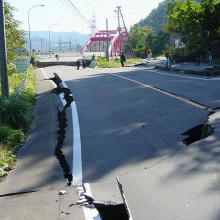
15:02 - What can satellites reveal about earthquakes?
What can satellites reveal about earthquakes?
with Professor James Jackson, Cambridge University
Chris - Now a few weeks on from what happened in Haiti, the whole situation there is still making news because of the sheer scale of the devastation. But what about the actual earthquake itself? What are scientists beginning to learn from observing the land as it now is following the quake. Well, James Jackson is professor of active tectonics at Cambridge University and he's with us. Hello James.
James - Hello.
Chris - Welcome to The Naked Scientists. Tell us a little bit, if you can, about how scientists are now beginning to follow-up what's happened in Haiti to try to understand more about what caused it in the first place and what's likely to come in the future.
James - We have a range of tricks now we can use to really do a forensic job on what happens in earthquakes, wherever they are. Some are space-based techniques, one of which is called radar interferometry. What we use here are satellites, which pass over the earth and send a radar beam down on the surface of the earth and it reflects back to the satellite. This is similar to the way people are used to hearing about how radar can monitor aeroplanes or ships look for other ships at sea by sending a beam out and measuring how long it takes to come back, which tells you how far away that object is.
What these satellites do is pass over the planet's surface. They take an image of the ground before the earthquake and then take another image of the ground after the earthquake. You can then compare the two and see how the ground has moved. We can do this now fairly regularly over most of the land surface of the earth and we can measure how much the ground has moved to an accuracy of a few centimetres. Maybe that sounds a lot or little to you - a few centimetres - but the actual signal in the earthquake - the  amount the ground moves - is between 2 and 5 metres. So the signal to noise ratio is fantastic; it's very easy to see this. There are various problems with it of course. The satellite itself is in a polar orbit, which means it orbits from north to south and the Earth rotates underneath it. So the satellite makes a track across the earth and every time it goes around, the earth has spun around a little bit more so it makes the track over a different place. So the satellite only repeats over the same track about every 30 or 40 days or something of that sort.
amount the ground moves - is between 2 and 5 metres. So the signal to noise ratio is fantastic; it's very easy to see this. There are various problems with it of course. The satellite itself is in a polar orbit, which means it orbits from north to south and the Earth rotates underneath it. So the satellite makes a track across the earth and every time it goes around, the earth has spun around a little bit more so it makes the track over a different place. So the satellite only repeats over the same track about every 30 or 40 days or something of that sort.
Chris - Which is why we've seen this little delay between the earthquake happening and now we're getting the data.
James - Yes, the data is now coming through. But not all satellites are the same. There's another effect we have to watch out for which is these satellites were not designed to do this. So the satellites which are up there were mostly designed to monitor the sea surface, because what you can monitor very easily and accurately is the height of the sea surface anywhere and that is how you monitor things like the El Niño, the big weather effects, which are the real reason for putting those satellites up there. So they were designed to look at the oceans and you have a particular optimal wavelength for doing that, which is about 5 centimetres. That's actually not very good for land because it scatters off things which are about 5 centimetres in size like leaves on trees. And places  like Hispaniola - and most of the Caribbean - is covered in jungle, so that's not very good. So there's another satellite, which uses a longer wavelength of about 15 centimetres. This is good, it sees through trees. But it doesn't repeat quite as often as the other ones, so we have had to wait quite a long time to get the data from this. But we now have some images of Hispaniola.
like Hispaniola - and most of the Caribbean - is covered in jungle, so that's not very good. So there's another satellite, which uses a longer wavelength of about 15 centimetres. This is good, it sees through trees. But it doesn't repeat quite as often as the other ones, so we have had to wait quite a long time to get the data from this. But we now have some images of Hispaniola.
Chris - What is this showing and what can we learn from it? Are our initial suspicions about what happened actually correct on the basis of what these satellites are revealing?
James - Yes, because there are also other ways we can get [the same informaton]. We also have seismology, which is the sound that comes out of the earthquake, to see what's happened and we can also use GPS, which is the precise movement of points on the ground. It's the same technology used for sat-navs in cars, but rather more precise. So these things combined together are very much more powerful than each one on its own.
Chris - What are they revealing?
James - They're revealing the length of the fault which moved, how much it moved, where it moved most, what's the distribution of slip along that fault, and how's the ground moved as a response to that earthquake. What you see is that the ground moves. It moves up and down, and sideways: a few metres in this earthquake - but if it does it hundreds of times in hundreds of earthquakes, it produces a landscape. And so what you learn about is the relation between the landscape and the way these faults move. And then you can recognize signals in the landscape which tell you about these faults before they move. So you can actually go to a place and say, "Yes. I know why the land looks like that because I've seen it before somewhere else." And that is what saves lives. It's that step which is now fairly routine in places like California and Japan, which allows the engineers to know what they're up against and design things that don't fall down.
Chris - One snag of course is that everywhere on earth is different or, you could argue, everywhere is unique to a certain extent and what goes for Haiti may not necessarily go elsewhere. So there will be a degree of geographic specificity, won't there? And therefore, you need to have a long term data set I suppose, in order to get close to understanding how that bit of the Earth's surface performs and behaves.
James - The circumstances are different. So Haiti is covered in jungle, Iran's covered in desert, which is much easier to see things. The way the faults move are not very different because they're obeying pretty basic laws of physics, which we understand at that level. We understand what happens if you move a fault that size and in the way it moved. It may be hard to see the signals in the landscape because they're not preserved in places that rain very heavily or are covered in ice or snow or so on. It's harder to see than in a desert. So, that's why we do these things all the time because you're right, you build up a databank of experience essentially, where you see bits of the story in some places, but you recognise the bits you can't see because actually, you've seen them somewhere else.
Is intelligence genetically inherited?
Chris - Ah, The nature and nurture debate!
This is a really hard question to answer for a number of reasons, one of which is how do we assess and appraise IQ (intelligence quotient). There's a guy called Jim Flynn who was working in New Zealand, at the University of Otago, and he's credited with noticing what's now dubbed the "Flynn effect." He points out that if you look at IQ test results that go back over many, many years, the average IQ has been rising by about three IQ points every decade. This means that if a hundred is the average IQ (an average person in a population with average IQ has an IQ of a hundred), that means that if you take off three decades worth of improvement, people would've been in the mentally subnormal category a few years back, which obviously, they weren't! He makes the point that it's the way in which we measure IQ which has to be considered as well. So some people just don't trust the IQ test.
But if you assume that we do, what proportion of the IQ that you or I have is because of the way our parents brought us up, and what amount is due to the genetic legacy that we inherit from those parents? Well there's one quite neat way of looking at this and you can probably guess what it is: to look at twins. Nature has blessed us with a set of natural clones, identical twins, and also a set of non-identical twins which grow up usually in the same environment as each other, but they don't have the same DNA in common. So you can compare the two and that's exactly what researchers have done in the past. There's a guy called Paul Thompson who is at UCLA in America; he published a beautiful paper in 2001 in Nature Neuroscience. What he did was to take 40 twins - 10 identical pairs of twins and 10 non-identical pairs of twins - and carry out brain scans on them.
They compared the fine structure of the brain in both groups of twins and they found that identical twins had 95 to 100% similarity in the fine structure of their brains. But the non-identical twins were much less similar.
Then you ask, "well, in that setting, how similar were their IQs?"
When they did simple IQ tests, they found that, for the identical twins, there was a significantly stronger relationship between their IQs than there was between the non-identical twins. So this shows that there's something to do with the way in which the brain is wired up and connected that definitely contributes to how intelligent we feel we are or that people measure us as being. So, the best guess at the moment is that there is some general factor - some people dub it "G" - which is what gives you your intelligence, and this seems to have a genetic effect. This has, superimposed on it, an environmental and nurture effect. So, in other words, you have a genetic legacy which is then manifest according to how nature impacts on it. So if you have a good educational upbringing and a good genetic legacy, then you probably will fulfil your genetic potential. That's not to say everyone who has a very high IQ is going to fulfil their genetic educational potential because they may just not get educated. So I think that the best guess is that it's about 50/50.
Why is most oil localised to the middle east?
We posed this question to James Jackson from the University of Cambridge...
Hydrocarbons are all are from dead organic material and you need an astonishing set of circumstances to make oil out of these things and preserve them. First, you've got to concentrate them somewhere where they're not dispersed or oxidised, which means in swamps, marshes, lakes or something like that. Then you've got to heat them up slowly over a long, long period to cook them up to make oil. And then, when they make oil and start to buzz off, you've got to have some way of trapping them. All these things, it turns out, happen on the margins of continents. If you stretch continents and try to pull them apart what happens is they "neck" - and that's what the North Sea is. The North Sea, for example, exists because Scotland and Norway moved apart about a hundred kilometres and so the land stretched and necked; the floor of what is now the North Sea got a bit thinner and it sunk below sea-level.
This caused it to become buried in sediment. Sediments just gets washed in, and all those dead bugs which were there got buried deeper and deeper and gently got cooked for a long time. Eventually, the North Sea stopped stretching. Had it carried on it would have been a plate margin - we would have got the edge of the continent and Scotland would have been over by America somewhere and Norway would still be in Europe. So, the circumstances for making oil are very good on the margins of continents. Especially the margins of oceans like the Atlantic ocean, which is not a plate boundary - there are no earthquakes there.
Now, what happened in Saudi Arabia is that that happened to be on the margin of a huge ocean which separated Asia from the southern continents. So, a hundred million years ago, Africa, India and Arabia were all a long way further south from where they are now and they've all moved north and bashed into Asia. One of those places is [what is now] Saudi Arabia, Iran and Iraq. So what's happened is the margin of that ocean, with the margins of Arabia, and Africa and India, have all just popped up above sea level. So it's not that there is more oil there than anywhere else. There's loads of oil all the way over on the other continental margins but that's underwater. It's hard to get out; it's hard to find and it's hard to suck out. Whereas in Saudi Arabia, it's popped up nicely above sea level and also in Iran and Iraq. So it's actually extremely easy to find.
In essence, it's more that it is conveniently situated than anything else; but, geologically, what you're looking at is like the edge of Ireland, the western side of Ireland, which has just run into something and popped back up above sea level.
How do you make an elephant run?
Helen - These elephants were in a rehabilitation centre - they've all been rescued from logging operations, I believe, in Thailand. They're often used to go into the forest and drag out trees that have been felled. These elephants would be paired with a handler as soon as they get to the rehabilitation centre. They've worked with an individual person who gets to know that elephant and can handle them and really control them and understand their different behaviours and characters. They ride on top of the elephants and presumably know how to calm them down or speed them up. But these are people who really understand the elephants. They play a key part in this study - it wasn't just the scientists coming in and messing around with the elephants!

Which way would a dirty golf ball turn?
What you're interested in here are the forces on the ball. If you've got air going past the ball, the only thing which can touch the ball is air (other than gravity - which we're going to ignore because it's not very interesting in these circumstances). So o you've got air getting past the ball and so if there's going to be a force on that ball the air's going to get deflected one way or the other. If the with air is deflected to the right then there's going to be an equal and opposite reaction on the ball it will go to the left and vice versa. Now what's going to happen if you put some mud on the right hand side of the ball? You've got air going over both sides of the ball - on the left hand side of the ball, the ball is just as normal and the air's going to stick to the edge of the ball and come around as far as it would do normally. On the right hand side of the ball you're going to get a whole lot of mud, it's going to be rough so the air is going to become turbulent and it's actually going to leave the ball earlier. So the air coming from the left is going to stick on the ball longer than the air going to the right. Which means overall the air's going to start moving to the right which means overall the ball is going to move to the left.

32:15 - Crisis Camps
Crisis Camps
with Chris Vallance, BBC Technology Correspondent
Meera - For this month's text segment I'm going to be finding out how technology can be used to help causes such as the Haiti relief fund and here to tell me all about it is our resident expert Chris Vallance. Now Chris you've brought me to the lovely Lincoln's Inn Fields in Holborn to tell me all about this today...
Chris V - Yes I'm working down at the World Service for a little while so near where we are in Lincoln's Inn Fields. So yes, looking at Haiti and how technologists, developers, hackers crisis commonscan help with disasters like that. A group called the Crisis Commons have been organizing what they calling "crisis camps" around the world that bring together people with skills in programming and developing internet applications to look at how they can help in disasters. Now you may think "well, actually, probably what people need is food, water, shelter, medicine." But there are tremendous logistical issues. And IT and technology can help solve some of those from some of the most basic such as mapping. I went down to one London crisis camp and talked to some of the people involved...
----
 Vinay - Hi I'm Vinay Gupta of the Hexayurt project and we're here at Crisis Camp London today. Crisis Camp is a forum for all the people who are interested in using the internet and technology to help out in Haiti to work together with field NGOs which are actually on the ground and organizing NGOs like the UNHCR to really try and produce a coordinated response. What we're doing is lots of work like mapping and reviewing software, making programmes work, gathering data from all the diverse sources on the internet and putting it together into something that the people on the ground, trying to help the population or doing reconstruction, can actually use on a day to day basis to make their jobs easier and more effective.
Vinay - Hi I'm Vinay Gupta of the Hexayurt project and we're here at Crisis Camp London today. Crisis Camp is a forum for all the people who are interested in using the internet and technology to help out in Haiti to work together with field NGOs which are actually on the ground and organizing NGOs like the UNHCR to really try and produce a coordinated response. What we're doing is lots of work like mapping and reviewing software, making programmes work, gathering data from all the diverse sources on the internet and putting it together into something that the people on the ground, trying to help the population or doing reconstruction, can actually use on a day to day basis to make their jobs easier and more effective.
Chris V - And this isn't the only one that's going on?
Vinay - No, today we have thirteen running in three countries. Last week there were three! So my guess is by the end of the month there's going to one in pretty much every major city that has a tech community.
Chris V - Is tech really a priority when a disaster hits though?
Vinay - If you think about it, if something happened in the UK, the first thing you're going to want to know is "can you get on the road from one place to another with a load of supplies?" So how do you find out? In the UK there's a government infrastructure which will figure that stuff out and then make it known to the responding agencies. But, in Haiti, the government buildings are all gone and a lot of the personnel are injured or missing. So to very quickly trying to figure out what's passable and what's not passable, what the military calls "road intelligence" or "roadint", how do you do it? So you have some military folks who are flying drones over the area and you take the data from those drones and you manually look at the roads and then you mark up what's passable and what isn't. And then you put it into a database and you push it down to the aid agencies. The weak link is the coordination between all the different agencies on the ground. If you've got 70, 80, 100 responding groups and very little telecommunications on the ground, getting over this problem of how to make sure that you don't wind up with two sets of water and no food in a specific location, is an IT problem. That's computers and communications, software and coordination. And Crisis Camp has the ability to deliver software to help with that.
Chris V - Are the coordinating agencies interested in what you are doing?
Vinay - Oh yes, absolutely. Crisis Camp is NGO-led. The Crisis Camp US folks are working directly with field NGOs to get a sense of the technology requirements, the right specs, and then put that stuff into action in terms of "right, now let's go find a team to build the tool that this group wants". So there's a direct chain of accountability all the way to the field.
Alan - I'm Alan Jackson I come from Activate which is a non profit IT organization based in Cambridge. Today I've been facilitating the first Crisis Camp in London and we've really identified a couple of areas of different projects that have been identified internationally that we can contribute to.
Chris V - What kind of people are attending this?
Haiti FlagAllan - It's an interesting mix of people actually. We've got some network engineers, we have some software engineers, we have usability experts, and we have people with the domain experience, people who have actually lived in Haiti.
Chris - What kind of things are you trying to build it, or trying to do?
Allan - One of the projects that has been sort of mandated from the international community, it seems, is to have a look a website called relief web which is a coordination portal for relief work run by UN-OCHA [United Nations Office for Coordination of Humanitarian Affairs] . So we've got a team of usability experts and low bandwidth design experts who are looking at that site and creating a plan for it which they can share with the community. One thing that we're conscious of is the quality of network connections, internet connections, that you have, particularly in a place like Haiti right now. So one thing that we have within the team here is a high degree of design expertise in designing websites for low bandwidth, slow internet connections. So we're really kind of taking that approach to relief web and seeing what we can do in that space to make recommendations to that team to see if there's anything that we can help with.
---
Chris V - ...Some of the people at a London Crisis Camp.
Meera - Now Chris, this all sounds really interesting but is this kind of technology and this bringing together of people really useful for situations such as Haiti?
Chris V - Well separate to the Crisis Camps, I actually had a conversation with a mapping expert who's talking about the importance to NGOs of some of the open street map work that has been done in order to produce detailed maps of Haiti. Because one of the problems was finding out where things are - actually getting aid to the right places; to do that you need good maps. So that sort of thing really is useful. Obviously as we've said earlier, medicine, food, shelter those are all top priorities. But in deploying those sometimes you do need some technological support as well.
Chris - Chris Vallance talking to Meera Senthilingam giving us an insight in how technological advances can be used to help coordinate the aid efforts in developing countries like Haiti.

Do only humans need to wipe bottom their bottom?
Helen - That's really a good question actually, do other animals have to keep themselves hygienic in that particular area? As far as we know, we haven't found any animals that actually have invented a tool for keeping themselves clean in that way. There maybe jokes about bears and rabbits but they are just jokes.
Chris - Isn't it called their tongue?
Helen - Exactly. I think most animals do actually just keep themselves clean by washing themselves. You know what cats can do - they've got the clever trick of putting their leg behind their neck and they keep themselves clean that way. Another thing some people with cats and dogs might have noticed is their pets doing something called "scooting", which is dragging their ass across the ground. Often pet owners get worried about why their dog or cat might be doing this - it is often after they've been to the toilet and they wonder if it's something connected to it.
Chris - They usually wait until they've got into the room with the best and the most expensive carpet...
Helen - Well there are various factors like that to consider. But veterinary surgeons really think that it's likely to be a parasitic infection, it could be worms, they are feeling very itchy and they want to scratch themselves. It's also could be an infection of something that is charmingly called the anal glands which are something many predatory animals have.
Either side of the anus they have these glands which produce scent chemicals. It is where a skunk produces smell from and it's what makes a fox turd smell like a fox turd and dog turds like a dog turd, and so on. They use that to mark their territory when they are defecating. If those get infected they can also be quite painful and that's why dogs and cats can drag themselves along the ground as well. And if your pet does seem to be doing that it's probably best to take them to the vet and get that sorted out.
So no, I don't think any animals actually use toilet paper but if they need to they will keep themselves clean in other ways.
Are there materials that convert heat directly into electricity?
You can't convert heat itself directly into electricity because you can't create or destroy energy, but you can do useful work with it converting it from one form into another. The forms which energy always converts to eventually are the more disordered forms of energy and heat is one of the most disordered forms.
You can get useful energy, useful electricity, from heat flowing from somewhere which is hot to somewhere which is cold. We've been doing that for hundreds of years, it's essentially what a steam engine does. You're moving heat from a hot fire to the cold outside world. You can do this just by putting two different metals together, this is called a thermocouple. That produces minute amounts of energy, but it is quite useful for measuring temperatures. You can get much more energy out using semiconductors, essentially you build a diode and the hot electrons can go through diode - then they have to flow all the way around the circuit and back to the other side. As they flow around they can do work.
So you can generate electricity through flows of heat but not from heat itself.
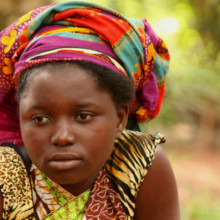
Why do darker skinned people live nearer to the equator?
Well; mankind first originated and evolved in Africa - what's probably now Northeast Africa is where the first modern humans originated from. It's equatorial; it's very hot; there's huge amounts of sunlight. So the risk there is that people will end up with ultraviolet radiation penetrating their bodies.
Now, the first thing people think of when you say "ultraviolet" is skin cancer. But, actually, skin cancer isn't the sole explanation for why people have black skin. Most people don't get skin cancer until after the age at which they would have reproduced anyway and therefore it wouldn't really have any evolutionary benefit to them to have black skin.
In fact, why they black skin is to prevent ultraviolet radiation breaking down the chemical folate in the skin. Folate is really important for the production of DNA. In order to conserve their reserves of folate, people who were at first evolving in Africa actually evolved to have black skin. The common ancestor that we share going back in time with, say, chimpanzees about 6 million years ago, those animals all had pink skins but they have fur to protect them. As soon as they became hairless, our early ancestors had to evolve dark skin to protect them from the sun.
But when they migrated north, out of Africa, and they ended up in high latitudes, like in Britain, where sunlight is something we don't see very often, there was just not enough sunlight - especially coupled with dark skin - to produce enough Vitamin D which gets made in your skin, so people then became a bit Vitamin D deficient. So we lost the genes that made us have black skin in order to produce more Vitamin D. The benefit of doing that is that you have stronger bones. The down side is you're slightly more vulnerable to the ultraviolet in the sunlight, but as there's much less sunlight it was a worthwhile gamble to take.

How does light travel through glass?
The first thing is that any solid object that looks solid to us is actually has huge amount of space in it...
Even in an atom, the nucleus of the atom is about a hundred thousandth of the size of the actual atom. So there's immense amounts of empty space only containing electrons, which are even smaller than the nuclei, so there's lots and lots of space for things to travel through, as long as it doesn't interact with the nuclei or electrons.
A light wave is actually quite big compared to the size of an atom. It's a quantum mechanical object - it's kind of a particle, but it's kind of a wave. You can think of it as wave which only arrives in particles - not really something with which we have a handle on.
It's a lot easier to think of it as a wave in the circumstance. The only way to stop a wave is with something which will actually absorb it or scatter it, and in something like glass there's just nothing there which will absorb or to scatter it. So it just carries on going in a straight line.
Addendum for clarity:
Light is an electromagntic wave; that means that it comprises a changing electric field, which produces a changing magnetic field, which produces a changing electric field and so on... This is how the light propagates through space.
When light rays interact with an entity, like a piece of glass, the electromagnetic wave causes the electron clouds in the material to vibrate; as the electron clouds vibrate, they regenerate the wave. This happens in a succession of "ripples" as the light passes through the object. Because this process takes time, that's why light slows down slightly in optically more dense materials like glass.
Different colours of light have different frequencies; light that is visible to us passes through glass because the arrangement of the atoms in glass means that they can sustain the ripple effect described above at those frequencies, so light can pass through.
But other materals, with a different configuration of atoms in the crystal structure, cannot permit light to propagate and instead absorb the energy. A good example of this is an X-ray. It will go straight through a human body mostly unchanged, but the lead apron worn by the radiographer stops it in its tracks.

What is the smallest thing that is possible to see with a microscope?
Dave - It depends on the kind of microscope. Light behaves a bit like a wave. It has a wavelength. It's very, very hard to see things smaller than the wavelength of the light because you essentially get interference effects. The waves interfere and it messes with your picture. With conventional microscopes it's very hard to see anything less than the wavelength of light which is about half a micrometer - roughly a 2000th of a millimetre. There are ways of doing things with light which means you can get a little bit smaller than that, using funky things called metamaterials, but they are not really common.
If you want to get much more magnification than that you need to use something with a much smaller wavelength. A common one to use is an electron, because although it appears like a particle it's also a wave and the wavelength is much, much shorter and therefore you can see much, much smaller things. You can actually see big atoms with a normal electron microscope. Other forms of microscope involve dragging a tip, it's called a scanning tunneling electron microscope, and you measure the electric current going between your tip and your object - with this, you can measure down to large atoms.
Chris - IBM iconically produced the letters "IBM", I think it was 1990-1991, by manoeuvring xenon atoms with a scanning tunnelling electron miscroscope, didn't they? I can't remember quite how many atoms they used - 40 or something - and it took them about 2 weeks to move these things around. People were saying this is the future of computing! There was also a story that got published in the middle of 2008. It was by a researcher at the University of California, Berkley, Jannik Meyer. This was a wonderful paper because they were able to see hydrogen atoms. That probably qualifies as the smallest thing you could see because that's the smallest entity at an atomic level in the Universe.
The way they did this was they had a sheet of graphene, which is a single layer, one carbon atom thick, of graphite and they could drop molecules onto that surface and then scan across it with the scanning tunnelling electron microscope and measure where it was interacting. The tip was interacting with the different atoms.
Because the graphene is like a little pattern of chicken wire - it's a very regular hexagon pattern - it's very easy to subtract mathematically from whatever signature you pick up, so they can see any atomic species that were dropped on there. They could even see these little white dots that turned out to be hydrogen atoms; if you put a bigger molecule, like a butane molecule - the stuff that you burn in your lighter - on there, you can actually see this zig-zagging chain of hydrocarbons. It's just absolutely phenomenal!
How many batteries can you place in series?
Dave - A battery basically has a little chemical reaction inside which, in conventional ones, causes the voltage of one end of the battery to be one and half volts higher than the other end. You can join batteries together and voltage will get higher. I can't see any intrinsic limit to how many times you can do that unless you get to a point where the voltage is so huge that you'll cause sparks from one end of the battery to earth. It depends how good your insulation is - through air you cause a spark at about a thousand volts per millimetre. So if you're getting into tens of thousands, or millions of volts, then you could create sparks. I think the bigger limit is how much money you have to buy the batteries and how much time you have to join them all together. Chris - There was a place in Alaska, about five years ago, where they were having so many frequent power cuts that they decided that they will build a massive great Nickel Cadmium battery to prop up the town every time there was a power cut. It was something ridiculous like 13,000 NiCad batteries all linked up to produce mains voltage for a short while to sustain the town and overcome the power deficit problems. Dave - In the past there have been research batteries at thousands and thousands of volts because it was the only way you can make these high voltages. Now we have easier ways using electronics.
Do warmer waters attract more sharks?
Helen - I believe that question came from someone who's been reading our website - there's a fantastic article there by Bruce Wright from October 2005 about how there are more sharks appearing in inland waters in Alaska. That's one particular case that seems to be going on. On a global scale, last year in fact, there were lots of news stories about shark attacks on the rise being linked to global warming, but really there was no proper science backing that up. First of all - is there really an increase in shark attacks? Well, maybe, but not necessarily for any other reason than there's more people in the water and they were reporting more shark attacks. There are only 50 to 100 attacks every year but when there's a peak that occurs, perhaps over the course of a month or two, people get very excited and think "Oh gosh! Something must be going on!"
Yes, sharks do respond to temperature, there are various ways that can affect them and warming seas are likely to affect sharks. A recent study has suggested that the Antarctic could become infested with sharks. There haven't been any sharks there for 40 million years but as it's warming up they could start moving back in there. That could really affect the ecosystems in those areas. So yes, sharks are affected by warming seas in ways that we're just starting to understand.

54:30 - Can you phone home from a black hole?
Can you phone home from a black hole?
We put this question to Andrew Pontzen, research fellow at the Kavli Institute for Cosmology:
Andrew - The short answer is no, but maybe you could receive a text message. So let me take a step back and try to explain. Basically, when you make a mobile phone call the device that you're holding in your hand is using radio waves to send your voice to the person at the other end of the call. Radio waves are just a certain form of light - we can't see it directly but we receive it using antennae in our mobile phones and other devices. Because it's a form of light, just like any other light, it can't get out of a black hole. So you cannot send your voice out of the black hole, there's no way for you to have a conversation. On the other hand, light can certainly get into a black hole and in the same way radio waves can get into a black hole. So if you were to adapt your mobile phone so it could just receive text messages without having to communicate to the network, then you could actually receive a text message from your mum just before you died at the centre of the black hole.
Diana - Lovely! so no-one can hear you scream from a black hole but you could pick up a text telling you to pick some potatoes the next time you go shopping. That answer was given by Andrew Pontzen and you can hear more from him answering your science questions and keeping us up to date with space site news on our Naked Astronomy podcast available from thenakedscientists.com/astronomy.
Why do sweeteners taste different to sugar?
Chris - We talked about Aspartame last week, and that's about 200 times sweeter than sugar. The reason that we use it, of course, is to make things taste much sweeter without having to add additional sugar - because the sweetener molecule has got virtually no calories in it compared to the large amount of calories that are in sugar. It fools the tongue into thinking things taste sweet because it locks on to the same chemical receptor - the docking station that recognizes sugar - making it taste sweet. In reality it doesn't actually impart any caloric contribution. The reason that it also has other tastes is because it doesn't just recognize the receptor for sugar, it also binds to other flavour receptors as well.
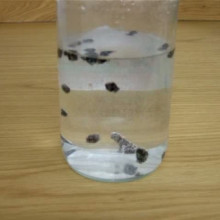










Comments
Add a comment